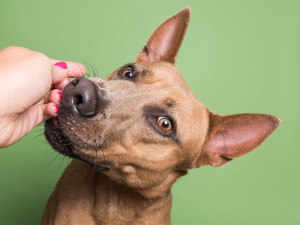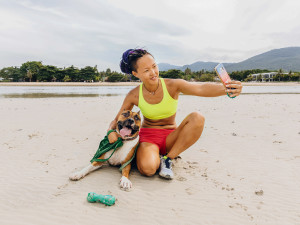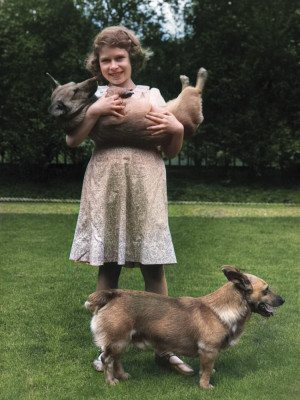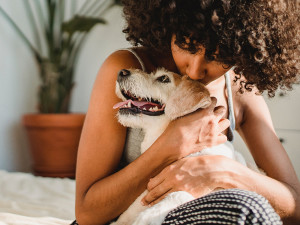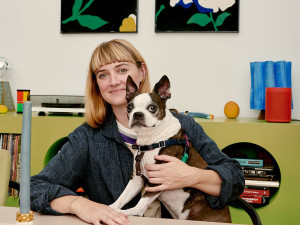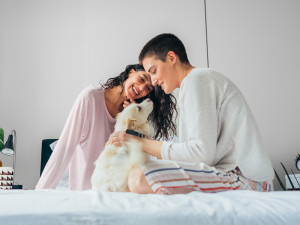How to Train Your Dog to Pose for Photos
For better dog photos, focus on your pup’s natural behaviors.
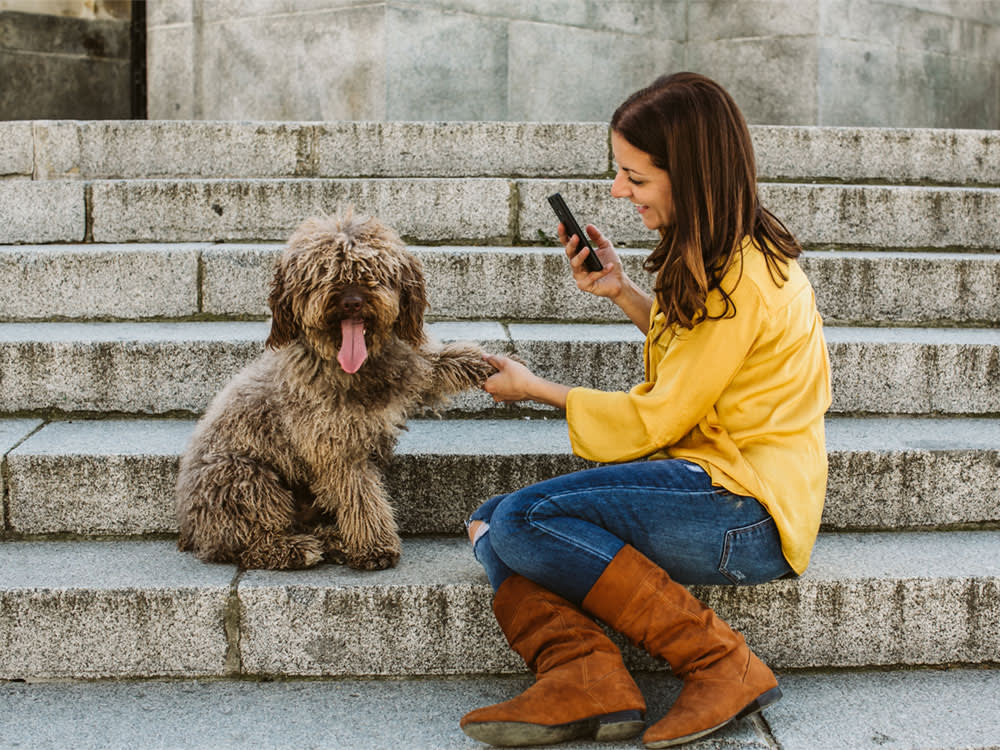
Share Article
Who doesn’t love taking photos of their dog? Dogs are beautiful, charming, and endearing. While this is true year-round, during the winter, it’s especially appropriate, when many of us are doing our best to inject any kind of fun we can into the holidays. To take a cute picture of your pup, it certainly helps to have a very patient dog with a good sit-stayopens in a new tab, but even then, getting a good photo can still be a challenge. Read on for ways to get your pup to cooperate for photos.
Train Your Dog to Pose for Photos
The difference between a reasonably cute photo and a must-be-framed-and-hung-on-the-wall shot comes down to two basic issues: technical and behavioral. On the technical side, go for lighting and backgroundsopens in a new tab that work in your favor. A proper understanding of your equipment means you can ensure that focus and exposure are spot on. The right perspective can make a huge difference; for example, capturing your dog at roughly their eye level will generally give you a better photo than a shot taken from above. Behaviorally, understanding how dogs naturally respond to a variety of cues goes a long way toward getting a photograph that does justice to your dog’s good looks. Here are a few things to keep in mind when getting your dog to model for pictures.

Get (totally free) deals for food, treats, accessories, tech, and way more pet parenting must-haves.
opens in a new tab1. Get your dog to look at the camera.
For a dog, a camera is a scary, giant eye. Dogs find staring rude as well as threatening, and a camera looks like the biggest eye ever to them. Because a larger lens used at a distance is less scary to most pups than a smaller lens used close up, a portrait lens is a good investment and will help ensure your pup looks in the right direction. And speaking of eyes, that’s where you literally need to keep your focus. A blurred tail or windblown fur can convey the essence of your dog by capturing their energy, but their eyes must be sharp, or the photo will look off.
2. Go for the head-tilt.
There’s something adorableopens in a new tab about a dog who’s cocking their head. Noises are key to drawing out that sought-after head-tilt. The easiest way to get your dog to tilt their head is to make an unfamiliar (and nonthreatening) sound. Why? Because of their extremely sensitive hearing, dogs often change the position of their ears to optimize their sound perception.
Smooching, tongue clicks, saying “woop, woop,” or even singing or imitating a bird may cause your dog to look at you inquisitively—and voilà, there’s the cute head tilt. If that doesn’t work, try a squeaky toy. Some dogs will hold the tilt for a while, but many do so only briefly, so be ready to take the shot as soon as they move their head.
3. Use training to help direct your dog’s attention and positioning.
For most dogs, training is best described as a work in progress, but there’s no need to despair. In terms of photographs, the goal is mainly to keep your dog in a pose and get their attention. Even if your dog doesn’t necessarily or consistently follow cues, there are ways to achieve them for a photo.
Use motion to your advantage: Many dogs are riveted by motion, so wiggling a finger, waving an arm or shaking a toy will often keep a dog occupied, posed and looking in the right direction long enough to take the shot.
Your body language can help: Dogs who don’t have a solid stay can be encouraged to remain in place with a slight lean-forward by the photographer. Additionally, if you ask your dog to sit and then put some distance between you to get in position, back away instead of turning your back. Dogs have a tendency to followopens in a new tab when you turn away from them—a great thing in general, but not during a photo session.
Make it a positive experience: Keep the session short and feed lots of treats and/or incorporate play. You don't want your pup to hate getting their picture taken. Do they love to fetchopens in a new tab? Use a tennis ball or incorporate it into your photo. Are they drawn to a particular toy? Use it.
4. Embrace the bloopers.
No matter how hard we try to take that elusive perfect photograph of our dogs, sometimes the best shots are the bloopers. Even during awkward moments, say when they're ignoring you and busily chewing one of the many treats. Do they tend to let their tongue hang out, or habitually raise their paw? Catch those moments and you will see not just a beautiful dog, but your beautiful dog. The result could be one of your all-time favorite dog photos.

Karen B. London, PhD, CAAB, CPDT-KA
Karen B. London, Ph.D., is a Certified Applied Animal Behaviorist and Certified Professional Dog Trainer who specializes in working with dogs with serious behavioral issues, including aggression, and has also trained other animals including cats, birds, snakes, and insects. She writes the animal column for the Arizona Daily Sun and is an Adjunct Professor in the Department of Biological Sciences at Northern Arizona University. She is the author of six books about training and behavior, including her most recent, Treat Everyone Like a Dog: How a Dog Trainer’s World View Can Improve Your Lifeopens in a new tab.
Related articles
![Princess Elizabeth (Queen Elizabeth II) holding one of her corgis in her arms and another corgi stands at her feet.]() opens in a new tab
opens in a new tabQueen Elizabeth’s Famous Corgis Were Her Most Loyal Subjects
Just a queen and her Corgis — an everlasting courtship.
![A woman sitting on a bed holding a dog close in her arms.]() opens in a new tab
opens in a new tabHumans + Dogs: The Longest Love Story
How we became human — an ongoing exploration.
![Ellen Dusen holding her dog Snips while seated at a colorful table]() opens in a new tab
opens in a new tabEllen Van Dusen & Snips in Living Color
The designer on playing with patterns, punching up home decor for dogs, and that time Harry Styles sported a Dusen Dusen sweater on SNL.
![A couple playing with their dog]() opens in a new tab
opens in a new tabThe Dog Likes Me Better (and Other Petty Heart-Warmers)
The shallow, perfect bliss of being more loved by my partner’s dog.
